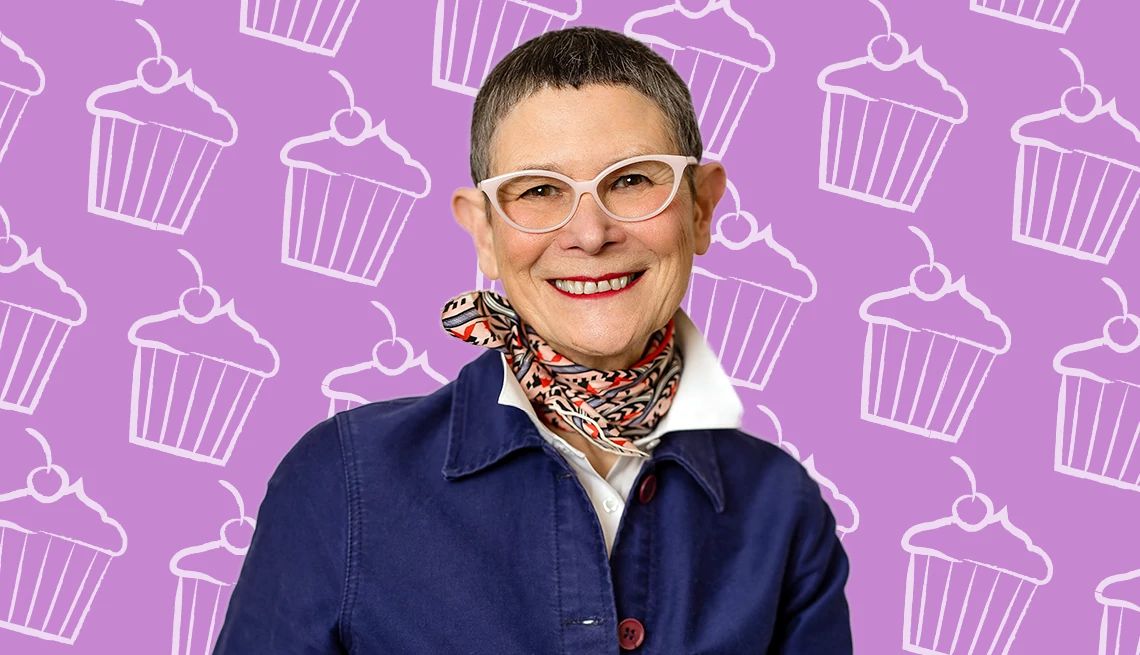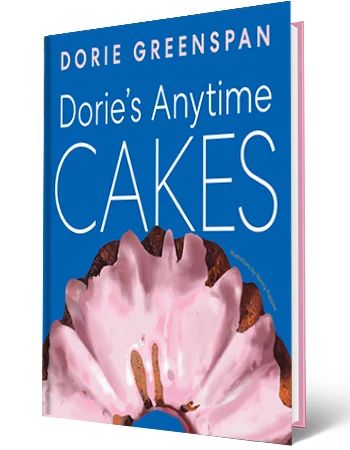AARP Hearing Center


Renowned baker and author Dorie Greenspan went from setting fire to her parents’ kitchen in her teens to collaborating with such cooking legends as Julia Child and Pierre Hermé, 63. She’s won a whopping five James Beard Awards, written beloved cooking columns for The Washington Post and The New York Times Magazine, published 14 books and been awarded the Ordre du Mérite agricole (Order of Agricultural Merit) by the French Consulate. But to Greenspan, the most shocking part of all this might be that she’s 77.
“In my head, I’m 27,” she says with a laugh, speaking to AARP by phone from her home in Connecticut, freshly returned from a six-week stint at her apartment in Paris. “Someone might come up to me and say, ‘I have my grandmother’s copy of your book.’ And of course I’m delighted, but I’m shocked! I think, ‘How is this possible? I’m too young for that.’”
Greenspan’s latest book, Dorie’s Anytime Cakes, showcases her decades of experience through anecdotes, baking tips and revamped recipes that draw inspiration from every corner of her life — and explains why she has an enduring love for uncomplicated cakes.


Bake With Dorie
Greenspan shares three recipes from Dorie’s Anytime Cakes for AARP members to try:
Chocolate and Almond Tabby-Not-Tiger Cake
This takes its tasting notes from the iconic French mini cake, the financier — and its name from a translation error.
Morning, Noon and Night Thanksgiving Cake
Truly an anytime cake that’s equal parts holiday fare, coffee pairing and lunch-box treat.
Inspired by Ebinger’s Black-Out Cake, this cake’s chocolate flavor is so full that it’s almost demonic.
“Over the years, making simple cakes, cakes I’ve come to think of as anytime cakes, has created lasting memories for me and the people I love. I so hope that it will be the same for you and everyone you bake for,” she writes in the book’s introduction. “When it comes to happiness, you can count on cake.”
The recipes in Dorie’s Anytime Cakes rely on readily available ingredients and can be made using pans you have on hand. Best of all, most can be hand-mixed, which Greenspan prefers.
She also includes a handful of “Treasured Favorite” recipes, one of which is The Devil’s Chocolate Cake, pared down from a recipe she developed in 2004 that was inspired by an “iconic” cake from Ebinger’s, a Brooklyn bakery she and her husband, Michael Greenspan, both remember from childhood.
“I was really interested in the process of taking something that I’ve made for so many years and making it ever so slightly new; holding on to the essence of it, keeping the memory of it, but just giving it a little glow-up,” she says.
Ever-present throughout the book is the suggestion that these cakes are best enjoyed with loved ones. “People rarely bake for just themselves. I hate to say it out loud, because I’m a baking evangelist — I want everybody to bake at home — but we don’t have to bake at all,” she says. “We do it because it’s something special, a treat. It’s something that we want to share.”


































































You Might Also Like
Gordon Ramsay Turns Comedy Clip Into Cookbook
The British star chef talks sandwiches, a new show and how he stays inspired
Martha Stewart’s Perennial Tips for Gardeners
Gardening wisdom and inspiration from a seasoned home expertAARP’s Smart Guide to Curb Appeal
From a simple cleanup to full-on remodel, 52 ways to show your home sweet home some love